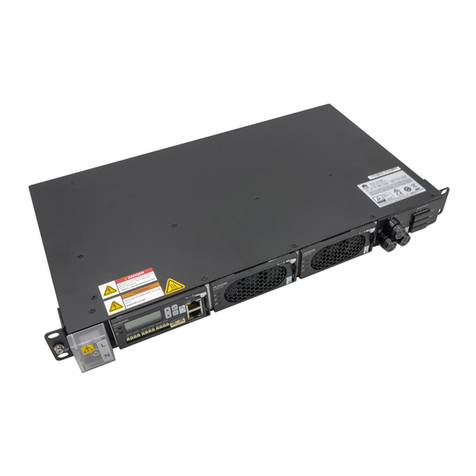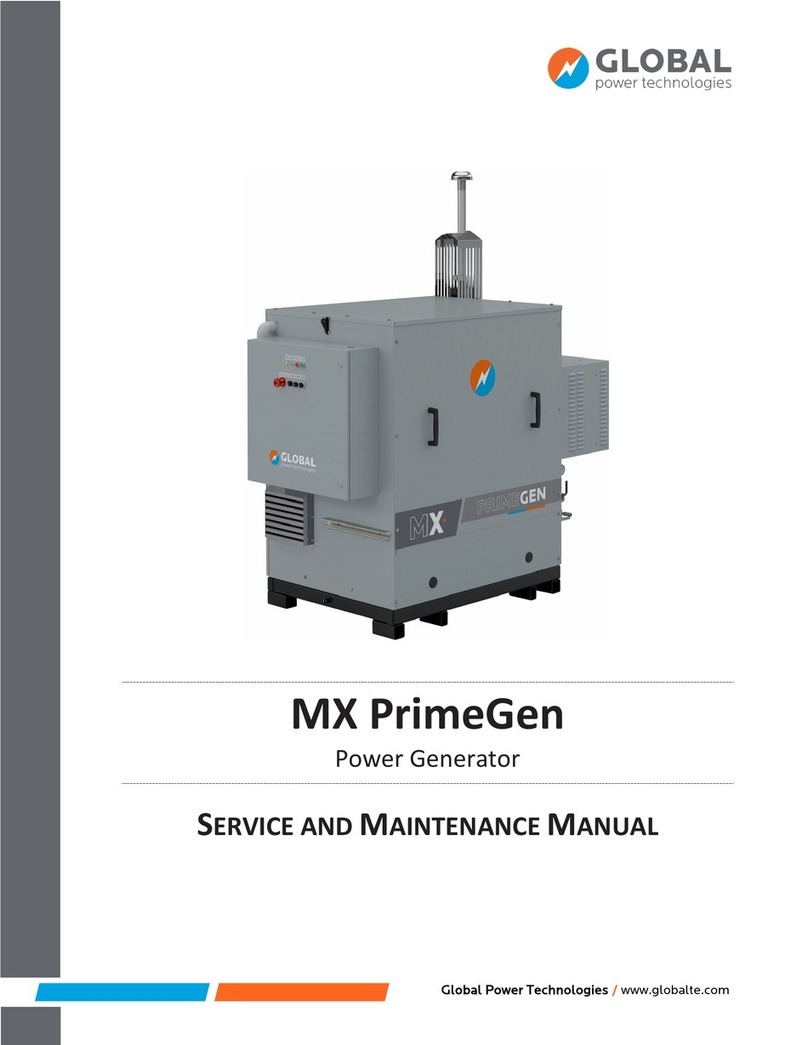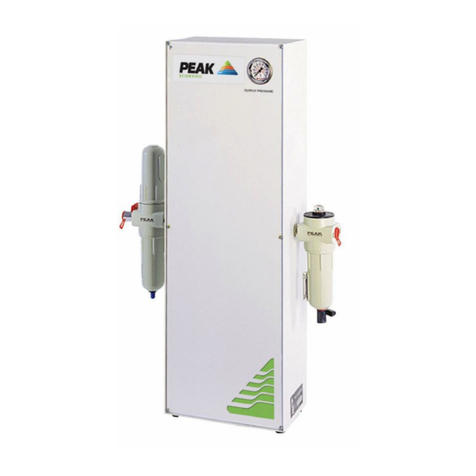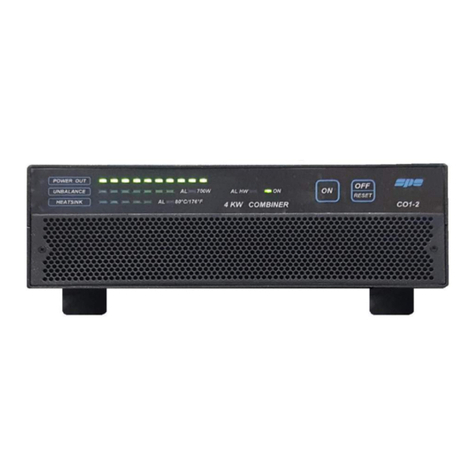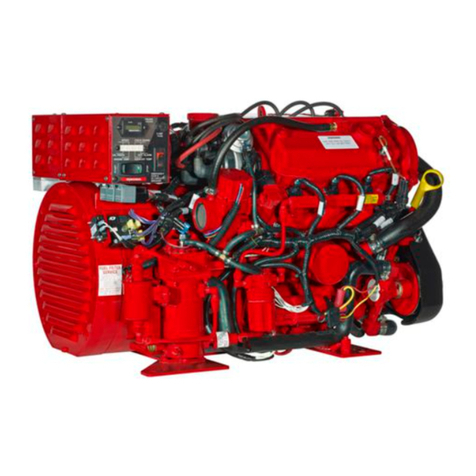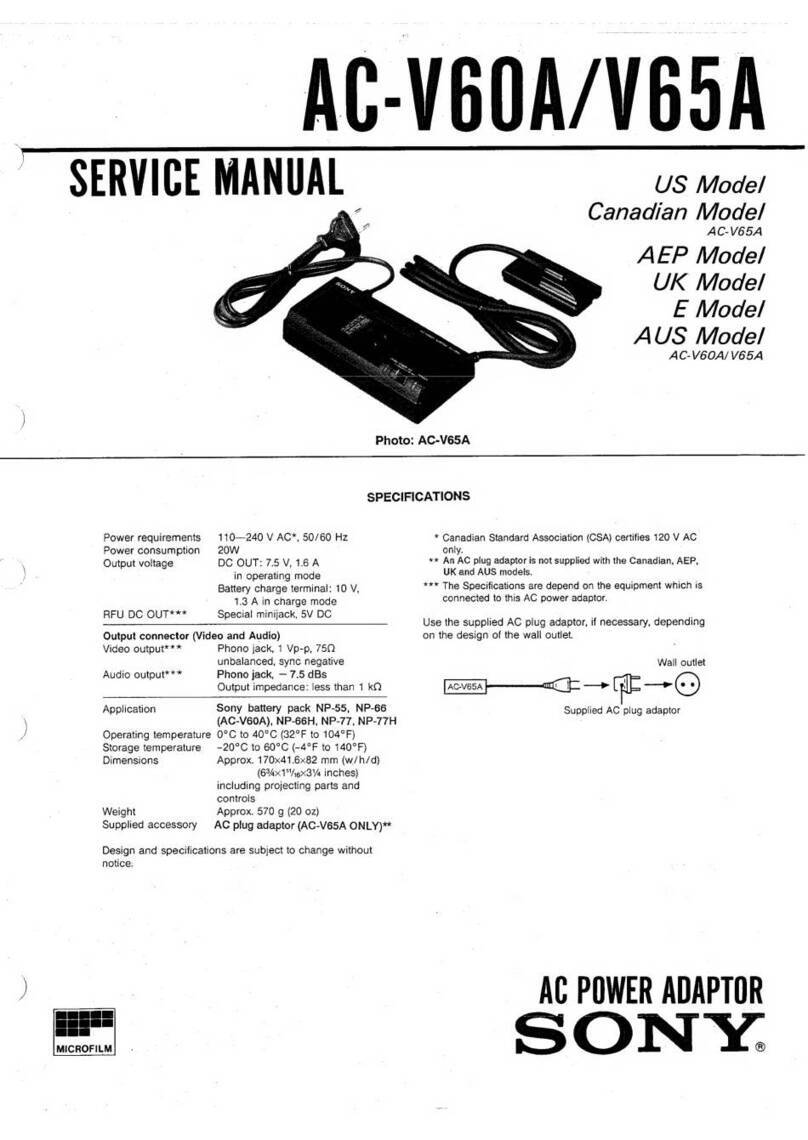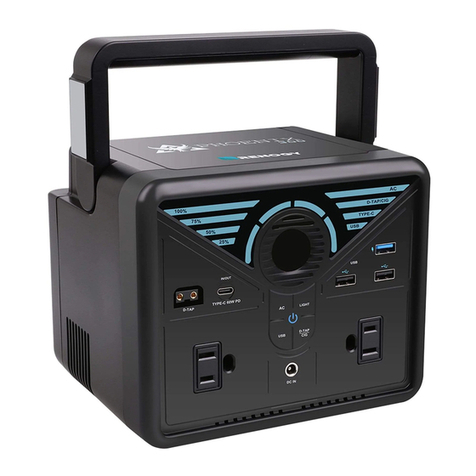Huawei TP48200A-HT19C4-1 User manual

TP48200A-HT19C4-1 and TBC300A-TCA2
Telecom Power
User Manual
Issue
03
Date
2019-11-15
HUAWEI TECHNOLOGIES CO., LTD.

Issue 03 (2019-11-15)
Copyright © Huawei Technologies Co., Ltd.
i
Copyright © Huawei Technologies Co., Ltd. 2019. All rights reserved.
No part of this document may be reproduced or transmitted in any form or by any means without prior
written consent of Huawei Technologies Co., Ltd.
Trademarks and Permissions
and other Huawei trademarks are trademarks of Huawei Technologies Co., Ltd.
All other trademarks and trade names mentioned in this document are the property of their respective
holders.
Notice
The purchased products, services and features are stipulated by the contract made between Huawei and
the customer. All or part of the products, services and features described in this document may not be
within the purchase scope or the usage scope. Unless otherwise specified in the contract, all statements,
information, and recommendations in this document are provided "AS IS" without warranties, guarantees or
representations of any kind, either express or implied.
The information in this document is subject to change without notice. Every effort has been made in the
preparation of this document to ensure accuracy of the contents, but all statements, information, and
recommendations in this document do not constitute a warranty of any kind, express or implied.
Huawei Technologies Co., Ltd.
Address:
Huawei Industrial Base
Bantian, Longgang
Shenzhen 518129
People's Republic of China
Website:
https://e.huawei.com

TP48200A-HT19C4-1 and TBC300A-TCA2 Telecom
Power
User Manual
Preface
Issue 03 (2019-11-15)
Copyright © Huawei Technologies Co., Ltd.
ii
Preface
Purpose
This document describes the DC power systems in terms of their features, configurations,
components, and maintenance methods.
The figures provided in this document are for reference only.
Intended Audience
This document is intended for:
Sales engineers
Technical support personnel
Maintenance personnel
Symbol Conventions
The symbols that may be found in this document are defined as follows.
Symbol
Description
Indicates a hazard with a high level of risk which, if not avoided, will
result in death or serious injury.
Indicates a hazard with a medium level of risk which, if not avoided,
could result in death or serious injury.
Indicates a hazard with a low level of risk which, if not avoided, could
result in minor or moderate injury.
Indicates a potentially hazardous situation which, if not avoided, could
result in equipment damage, data loss, performance deterioration, or
unanticipated results.
NOTICE is used to address practices not related to personal injury.
Supplements the important information in the main text.
NOTE is used to address information not related to personal injury,
equipment damage, and environment deterioration.

TP48200A-HT19C4-1 and TBC300A-TCA2 Telecom
Power
User Manual
Preface
Issue 03 (2019-11-15)
Copyright © Huawei Technologies Co., Ltd.
iii
Change History
Changes between document issues are cumulative. The latest document issue contains all the
changes made in earlier issues.
Issue 03 (2019-11-15)
Deleted contents about the app.
Optimized the content about rectifiers.
Issue 02 (2019-02-26)
Optimized the content of the document.
Issue 01 (2014-03-10)
This issue is the first official release.

TP48200A-HT19C4-1 and TBC300A-TCA2 Telecom
Power
User Manual
Contents
Issue 03 (2019-11-15)
Copyright © Huawei Technologies Co., Ltd.
iv
Contents
Preface ............................................................................................................................................... ii
1 Safety Precautions.........................................................................................................................1
1.1 General Safety ..............................................................................................................................................................1
1.2 Personnel Requirements ...............................................................................................................................................5
1.3 Electrical Safety............................................................................................................................................................5
1.4 Installation Environment Requirements .......................................................................................................................7
1.5 Mechanical Safety ........................................................................................................................................................8
1.6 Battery Safety ............................................................................................................................................................. 11
2 Overview.......................................................................................................................................15
2.1 Overview ....................................................................................................................................................................15
2.2 Model Number Description ........................................................................................................................................16
2.3 System Features..........................................................................................................................................................17
2.4 Working Principles......................................................................................................................................................17
2.5 Configurations ............................................................................................................................................................18
3 Components .................................................................................................................................20
3.1 Interior........................................................................................................................................................................20
3.2 PDU............................................................................................................................................................................22
3.2.1 Battery Switch .........................................................................................................................................................23
3.3 Rectifier ......................................................................................................................................................................23
3.4 SMU02B.....................................................................................................................................................................25
3.5 UIM02C......................................................................................................................................................................28
3.6 Temperature Control Unit...........................................................................................................................................31
3.6.1 Heat Exchanger........................................................................................................................................................31
3.6.2 TEC..........................................................................................................................................................................32
3.7 Sensor .........................................................................................................................................................................35
3.7.1 Smoke Sensor ..........................................................................................................................................................37
3.7.2 Temperature and Humidity Sensor ..........................................................................................................................38
3.7.3 Water Sensor............................................................................................................................................................39
3.7.4 Battery Temperature Sensor.....................................................................................................................................39
3.7.5 Temperature Sensor in the Equipment Compartment ..............................................................................................39
4 Maintenance.................................................................................................................................40

TP48200A-HT19C4-1 and TBC300A-TCA2 Telecom
Power
User Manual
Contents
Issue 03 (2019-11-15)
Copyright © Huawei Technologies Co., Ltd.
v
4.1 Routine Maintenance..................................................................................................................................................40
4.2 Rectifying Common Faults.........................................................................................................................................41
4.2.1 AC Failure................................................................................................................................................................41
4.2.2 AC Over Volt ...........................................................................................................................................................42
4.2.3 AC Under Volt .........................................................................................................................................................42
4.2.4 DC Over Volt ...........................................................................................................................................................42
4.2.5 DC Under Volt .........................................................................................................................................................42
4.2.6 Batt Chg. Overcur....................................................................................................................................................43
4.2.7 LLVD Disconnected ................................................................................................................................................43
4.2.8 BLVD Disconnected................................................................................................................................................44
4.2.9 Batt Loop Trip..........................................................................................................................................................44
4.2.10 High Amb. Temp....................................................................................................................................................44
4.2.11 Low Amb. Temp. ...................................................................................................................................................45
4.2.12 High Amb. Humi. ..................................................................................................................................................45
4.2.13 Low Ambient Humidity.........................................................................................................................................46
4.2.14 Batt. High Temp.....................................................................................................................................................46
4.2.15 Batt. Low Temp. ....................................................................................................................................................46
4.2.16 Door Alarm............................................................................................................................................................47
4.2.17 Water Alarm...........................................................................................................................................................47
4.2.18 Smoke Alarm.........................................................................................................................................................47
4.2.19 Rect Fault...............................................................................................................................................................48
4.2.20 Rect Protection.......................................................................................................................................................48
4.2.21 Rect Comm Fault...................................................................................................................................................48
4.2.22 Load Loop Break...................................................................................................................................................49
4.2.23 AC SPD Fault ........................................................................................................................................................49
4.2.24 DC SPD Fault ........................................................................................................................................................49
4.3 Identifying Component Faults ....................................................................................................................................49
4.3.1 Identifying AC SPD Faults ......................................................................................................................................49
4.3.2 Identifying Circuit Breaker Faults ...........................................................................................................................50
4.3.3 Identifying Rectifier Faults......................................................................................................................................50
4.3.4 Identifying SMU Faults ...........................................................................................................................................50
4.4 Replacing Components...............................................................................................................................................50
4.4.1 Replacing a Rectifier ...............................................................................................................................................51
4.4.2 Replacing an SMU...................................................................................................................................................52
4.4.3 Replacing an AC SPD..............................................................................................................................................53
4.4.4 Replacing a Circuit Breaker.....................................................................................................................................54
4.4.5 Replacing the PCB of UIM02C...............................................................................................................................56
4.4.6 Replacing the Internal Circulation Fan of the Heat Exchanger ...............................................................................58
4.4.7 Replacing the External Circulation Fan of the Heat Exchanger ..............................................................................60
4.4.8 Replacing a TCUA Control Board...........................................................................................................................63
4.4.9 Replacing a TEC......................................................................................................................................................66
4.4.10 Replacing an Ambient Temperature and Humidity Sensor....................................................................................69

TP48200A-HT19C4-1 and TBC300A-TCA2 Telecom
Power
User Manual
Contents
Issue 03 (2019-11-15)
Copyright © Huawei Technologies Co., Ltd.
vi
4.4.11 Replacing a Smoke Sensor.....................................................................................................................................70
4.4.12 Replacing a Battery Temperature Sensor...............................................................................................................72
4.4.13 Replacing a Temperature Sensor for the Equipment Compartment.......................................................................73
4.4.14 Replacing a Water Sensor......................................................................................................................................75
A Technical Specifications...........................................................................................................77
A.1 Environmental Specifications ....................................................................................................................................77
A.2 Electrical Specifications.............................................................................................................................................77
A.3 EMC Specifications...................................................................................................................................................78
A.4 Cabinet Specifications ...............................................................................................................................................79
A.5 HXC150S Heat Exchanger Specifications.................................................................................................................80
A.6 TEC04C Specifications..............................................................................................................................................80
B Electrical Conceptual Diagram ................................................................................................82
C Associations Between Alarms and Dry Contacts on the UIM...........................................83
D Jumper Caps on the TCUA Control Board............................................................................84
E Cables Connection of TCUA Control Board .........................................................................85
F Acronyms and Abbreviations...................................................................................................86

TP48200A-HT19C4-1 and TBC300A-TCA2 Telecom
Power
User Manual
1 Safety Precautions
Issue 03 (2019-11-15)
Copyright © Huawei Technologies Co., Ltd.
1
1 Safety Precautions
1.1 General Safety
Statement
Before installing, operating, and maintaining the equipment, read this document and observe
all the safety instructions on the equipment and in this document.
The "NOTICE", "CAUTION", "WARNING", and "DANGER" statements in this document
do not cover all the safety instructions. They are only supplements to the safety instructions.
Huawei will not be liable for any consequence caused by the violation of general safety
requirements or design, production, and usage safety standards.
Ensure that the equipment is used in environments that meet its design specifications.
Otherwise, the equipment may become faulty, and the resulting equipment malfunction,
component damage, personal injuries, or property damage are not covered under the warranty.
Follow local laws and regulations when installing, operating, or maintaining the equipment.
The safety instructions in this document are only supplements to local laws and regulations.
Huawei will not be liable for any consequences of the following circumstances:
Operation beyond the conditions specified in this document
Installation or use in environments which are not specified in relevant international or
national standards
Unauthorized modifications to the product or software code or removal of the product
Failure to follow the operation instructions and safety precautions on the product and in
this document
Equipment damage due to force majeure, such as earthquakes, fire, and storms
Damage caused during transportation by the customer
Storage conditions that do not meet the requirements specified in this document
General Requirements
Before installing, operating, or maintaining the equipment, remove any conductive
objects such as watches or metal jewelry like bracelets, bangles, and rings to avoid
electric shock.

TP48200A-HT19C4-1 and TBC300A-TCA2 Telecom
Power
User Manual
1 Safety Precautions
Issue 03 (2019-11-15)
Copyright © Huawei Technologies Co., Ltd.
2
When installing, operating, or maintaining the equipment, wear dedicated protective
gears such as insulation gloves, goggles, and safety clothing, helmet, and shoes, as
shown in the following figure.
Use insulated tools or tools with insulated handles, as shown in the following figure.
Follow the specified procedures for installation, operation, and maintenance.
Ensure that bolts are tightened with a torque wrench and marked using red or blue color.
Installation personnel mark tightened bolts in blue. Quality inspection personnel confirm
if the bolts are tightened and then mark them in red. (The marks should cross the edges
of the bolts, as shown in the following figure.)
Before installing, operating, or maintaining a cabinet, clean up any water, ice, snow, or
other sundries on the top of the cabinet to prevent sundries from falling into the cabinet
when you open the cabinet door.

TP48200A-HT19C4-1 and TBC300A-TCA2 Telecom
Power
User Manual
1 Safety Precautions
Issue 03 (2019-11-15)
Copyright © Huawei Technologies Co., Ltd.
3
Do not install, use, or operate outdoor equipment and cables (including but not limited to
moving equipment, operating equipment and cables, inserting connectors to or removing
connectors from signal ports connected to outdoor facilities, working at heights, and
performing outdoor installation) in harsh weather conditions such as lightning, rain,
snow, and level 6 or stronger wind.
Before handling a conductor surface or terminal, measure the contact point voltage and
ensure that there is no risk of electric shock.
Ensure that all slots are installed with boards or filler panels.Avoid hazards caused by
hazardous voltages or energy on boards. Ensure that the air channel is normal, control
electromagnetic interference, and prevent dust and other sundries on the backplane,
baseplate, and boards.
After installing the equipment, remove idle packing materials such as cartons, foam,
plastics, and cable ties from the equipment area.
In the case of a fire, immediately leave the building or the equipment area, and turn on
the fire alarm bell or make an emergency call. Do not enter the building on fire in any
case.
Do not stop using protective devices. Pay attention to the warnings, cautions, and related
precautionary measures in this document and on the equipment. Promptly replace
warning labels that have worn out.
Keep irrelevant people away from the equipment. Only operators are allowed to access
the equipment.
All cable holes should be sealed. Seal the used cable holes with firestop putty. Seal the
unused cable holes with the caps delivered with the cabinet. The following figure shows
the criteria for correct sealing with firestop putty.
Do not use water, alcohol, oil, or other solvents to clean electrical components inside and
outside a cabinet.
Personal Safety
If there is a probability of personal injury or equipment damage during operations on the
equipment, immediately stop the operations, report the case to the supervisor, and take
feasible protective measures.
To avoid electric shock, do not connect safety extra-low voltage (SELV) circuits to
telecommunication network voltage (TNV) circuits.
Do not power on the equipment before it is installed or confirmed by professionals.

TP48200A-HT19C4-1 and TBC300A-TCA2 Telecom
Power
User Manual
1 Safety Precautions
Issue 03 (2019-11-15)
Copyright © Huawei Technologies Co., Ltd.
4
Symbol Conventions
To ensure personal and equipment safety, observe all the safety instructions marked on the
equipment when installing, operating, and maintaining the equipment.
Symbol
Description
Indicates a part exposed to high voltage. This symbol warns
operators that both direct and indirect contact with the power grid
is fatal. Such areas include hazardous voltage points or protective
power supply covers that may be removed during maintenance.
Warns users of overheating. This symbol is attached to a device
surface that may overheat and cause scalding. It warns users not to
touch the surface during operations or maintenance. Users should
wear heat insulation gloves before operations to prevent scalding.
or
Indicates protection earthing. This symbol is attached next to a
protection ground terminal next to grounded equipment and an
external ground system. An equipment ground cable is connected
to an external ground bar through the protection ground terminal.
Indicates equipotential bonding. This symbol is found with
equipotential terminals inside equipment.
Indicates electrostatic discharge (ESD). This symbol is used in all
electrostatic sensitive areas. Before operating equipment in these
areas, wear ESD gloves or an ESD wrist strap.
Indicates that the equipment is safe to use at altitudes below 2000
m (6561.6 ft.).
Indicates that the equipment is not safe to use in tropical climates.
or
Indicates a fan assembly or moving part. This symbol is
silkscreened on or attached to the panel of a fan assembly,
warning operators to keep away. Do not touch the blades when the
fan is rotating.
or
or
Indicates that users should refer to the instruction. This symbol is
used when the usage of a device port cannot be clearly described.
For example, this symbol can be used in but not limited to the
following scenarios:
1. For a multi-power device, use it near the power supply to
replace the multi-power supply identifier. The symbol indicates
that the device has multiple power inputs. Therefore, when
powering off the device, you must disconnect all power inputs.
2. If there are multiple output ports, use the symbol near the
output ports. Connect cables according to the rated power
output and configuration parameter information in the
instruction.
3. If there are multiple slots, use the symbol near the slot

TP48200A-HT19C4-1 and TBC300A-TCA2 Telecom
Power
User Manual
1 Safety Precautions
Issue 03 (2019-11-15)
Copyright © Huawei Technologies Co., Ltd.
5
Symbol
Description
information. For details, see the description of slot information,
restrictions on boards, and usage conditions in the instruction.
1.2 Personnel Requirements
Personnel who plan to install or maintain Huawei equipment must receive thorough
training, understand all necessary safety precautions, and be able to correctly perform all
operations.
Only qualified professionals or trained personnel are allowed to install, operate, and
maintain the equipment.
Only qualified professionals are allowed to remove safety facilities and inspect the
equipment.
Personnel who will operate the equipment, including operators, trained personnel, and
professionals, should possess the local national required qualifications in special
operations such as high-voltage operations, working at heights, and operations of special
equipment.
Professionals: personnel who are trained or experienced in equipment operations and are clear of the
sources and degree of various potential hazards in equipment installation, operation, and
maintenance
Trained personnel: personnel who are technically trained, have required experience, are aware of
possible hazards on themselves in certain operations, and are able to take protective measures to
minimize the hazards on themselves and other people
Operators: operation personnel who may come in contact with the equipment, except trained
personnel and professionals
1.3 Electrical Safety
Grounding
The protective ground of the equipment should be reliably connected to the ground
screw on the metal enclosure (grounding resistance ≤ 0.1 ohm).
For the equipment that needs to be grounded, install the ground cable first when
installing the equipment and remove the ground cable last when removing the
equipment.
Do not damage the ground conductor.
Do not operate the equipment in the absence of a properly installed ground conductor.
For the equipment that uses a three-pin socket, ensure that the ground terminal in the
socket is connected to the protection ground.
AC and DC Power

TP48200A-HT19C4-1 and TBC300A-TCA2 Telecom
Power
User Manual
1 Safety Precautions
Issue 03 (2019-11-15)
Copyright © Huawei Technologies Co., Ltd.
6
The power system is energized by power sources with hazardous voltage. Direct or
indirect contact (through damp objects) with the power sources may result in electric
shock.
Non-standard and improper operations may result in fire or electric shock.
Do not connect or disconnect power cables with power on. Transient contact between the
core of the power cable and the conductor will generate electric arcs or sparks, which may
cause fire or personal injury.
If the power supply to the equipment is permanently connected, install an easily
accessible disconnector at the exterior of the device.
Before making electrical connections, switch off the disconnector on the upstream device
to cut off the power supply if people may contact energized components.
If a "high electricity leakage" tag is attached on the equipment, ground the protective
ground terminal on the equipment enclosure before connecting theAC power supply;
otherwise, electric shock as a result of electricity leakage may occur.
Before installing or removing a power cable, turn off the power switch.
Before connecting a power cable, check that the label on the power cable is correct.
Before connecting the power supply, ensure that cable connections are correct.
If the equipment has multiple inputs, disconnect all the inputs before operating the
equipment.
Cabling
When routing cables, ensure that a distance of at least 30 mm exists between the cables
and heat-generating components or areas. This prevents damage to the insulation layer of
the cables.
Do not route cables behind the air intake and exhaust vents of the equipment.
Ensure that cables meet the VW-1 flame spread rating requirements.
Bind cables of the same type together. When routing cables of different types, ensure that
they are at least 30 mm away from each other.
Ensure that all cables are securely bound. Route and bind cables so that they appear neat
and tidy and their cable sheaths are intact.
If anAC input power cable is connected to the cabinet from the top, bend the cable in a
U shape outside the cabinet and then route it into the cabinet.
Ensure that the bending radius of each cable is at least five times the diameter of the
cable.
When routing power cables, ensure that there is no coiling or twisting. Do not join or
weld power cables. If necessary, use a longer cable.
ESD
When installing, operating, and maintaining the equipment, comply with the ESD
protection regulations and wear the ESD clothing, gloves, and wrist strap.
When holding a board, hold its edge without touching any components. Do not touch the
components with your bare hands.
Package boards with ESD packaging materials before storing or transporting them.

TP48200A-HT19C4-1 and TBC300A-TCA2 Telecom
Power
User Manual
1 Safety Precautions
Issue 03 (2019-11-15)
Copyright © Huawei Technologies Co., Ltd.
7
1.4 Installation Environment Requirements
To prevent fire due to high temperature, ensure that the ventilation vents or heat
dissipation system are not blocked when the equipment is running.
Ensure that there are no acid, alkaline, or other corrosive gases in the installation place.
Do not place the equipment near heat sources or exposed fire sources, such as electric
heaters, microwave ovens, roasters, water heaters, furnace fire, candles, or other places
where high temperature may occur. Otherwise, the enclosure will melt or the equipment
will heat up, which can cause a fire.
Install the equipment in an area far away from liquids. Do not install it under areas prone
to condensation, such as under water pipes and air exhaust vents, or areas prone to water
leakage, such as air conditioner vents, ventilation vents, or feeder windows of the
equipment room. Ensure that no liquid enters the equipment to prevent faults or short
circuits.
Before installing the equipment into a cabinet, ensure that the cabinet is secured and will
not tilt or fall down due to loss of balance, which can cause personal injury or equipment
damage.
Do not expose the equipment to flammable or explosive gas or smoke. Do not perform
any operation on the equipment in such environments.
Installation at Heights
Working at heights refers to operations that are performed at least 2 meters above the ground.
Do not at heights in any of the following situations:
Rainwater remains on steel pipes or other risky conditions exist. After the preceding
conditions no longer exist, the safety director and relevant technical personnel need to
check the involved equipment. Operators can begin working only after obtaining
consent.
When working at heights, comply with local relevant laws and regulations.
Only trained and qualified personnel are allowed to work at heights.
Before working at heights, check the climbing tools and safety gears such as safety
helmets, safety belts, ladders, springboards, scaffolding, and lifting equipment. If they do
not meet the requirements, take corrective measures or disallow working at heights.
Wear personal protective equipment such as the safety helmet and safety belt or waist
rope and fasten it to a solid structure. Do not mount it on an insecure moveable object or
metal object with sharp edges. Make sure that the hooks will not slide off.

TP48200A-HT19C4-1 and TBC300A-TCA2 Telecom
Power
User Manual
1 Safety Precautions
Issue 03 (2019-11-15)
Copyright © Huawei Technologies Co., Ltd.
8
Set a restricted area and eye-catching signs for working at heights to warn away irrelevant
personnel.
Carry the operation machinery and tools properly to prevent them from falling off and
causing injuries.
Personnel involving working at heights are not allowed to throw objects from the height to
the ground, or vice versa. Objects should be transported by tough slings, hanging baskets,
highline trolleys, or cranes.
Do not perform operations on the upper and lower layers at the same time. If unavoidable,
install a dedicated protective shelter between the upper and lower layers or take other
protective measures. Do not pile up tools or materials on the upper layer.
Ensure that guard rails and warning signs are set at the edges and openings of the area
involving working at heights to prevent falls.
Do not pile up scaffolding, springboards, or other sundries on the ground under the area
involving working at heights. Do not allow people to stay or pass under the area involving
working at heights.
Inspect the scaffolding, springboards, and workbenches used for working at heights in
advance to ensure that their structures are solid and not overloaded.
Dismantle the scaffolding from top down after finishing the job. Do not dismantle the
upper and lower layers at the same time. When removing a part, ensure that other parts
will not collapse.
Do not loiter when working at heights. Do not sleep at heights.
Any violations must be promptly pointed out by the site manager or safety supervisor
and the involved personnel should be prompted for correction. Personnel who fail to stop
violations will be forbidden from working.
Operators who violate the safety regulations are responsible for accidents caused. The
supervisor has to bear the responsibility accordingly.
1.5 Mechanical Safety
Hoisting Devices
Do not walk under hoisted objects.
Only trained and qualified personnel should perform hoisting operations.
Check that hoisting tools are available and in good condition.
Before hoisting objects, ensure that hoisting tools are firmly secured onto a load-bearing
object or wall.
Ensure that the angle formed by two hoisting cables is no more than 90 degrees, as
shown in the following figure.

TP48200A-HT19C4-1 and TBC300A-TCA2 Telecom
Power
User Manual
1 Safety Precautions
Issue 03 (2019-11-15)
Copyright © Huawei Technologies Co., Ltd.
9
Do not drag steel ropes and hoisting tools or bump hoisted objects against hard objects
during hoisting.
Using Ladders
Use wooden or fiberglass ladders when you need to perform live working at heights.
When a step ladder is used, ensure that the pull ropes are secured and the ladder is held
firm.
Before using a ladder, check that it is intact and confirm its load bearing capacity. Do not
overload it.
Ensure that the wider end of the ladder is at the bottom, or protective measures have
been taken at the bottom to prevent the ladder from sliding.
Ensure that the ladder is securely positioned. The recommended angle for a ladder
against the floor is 75 degrees, as shown in the following figure. An angle rule can be
used to measure the angle.
When climbing a ladder, take the following precautions to reduce risks and ensure safety:

TP48200A-HT19C4-1 and TBC300A-TCA2 Telecom
Power
User Manual
1 Safety Precautions
Issue 03 (2019-11-15)
Copyright © Huawei Technologies Co., Ltd.
10
Keep your body steady.
Do not climb higher than the fourth rung of the ladder from the top.
To climb onto a roof, ensure that the ladder top is at least one meter higher than the roof
line, as shown in the following figure.
Ensure that your body's center of gravity does not shift outside the legs of the ladder.
Drilling Holes
When drilling holes into a wall or floor, observe the following safety precautions:
Do not drill holes into the equipment. Doing so may affect the electromagnetic shielding of
the equipment and damage components or cables inside. Metal shavings from drilling may
short-circuit boards inside the equipment.
Wear goggles and protective gloves when drilling holes.
When drilling holes, protect the equipment from shavings.After drilling, clean up any
shavings that have accumulated inside or outside the equipment.
Moving Heavy Objects
Be cautious to avoid injury when moving heavy objects.
When moving the equipment by hand, wear protective gloves to prevent injuries.

TP48200A-HT19C4-1 and TBC300A-TCA2 Telecom
Power
User Manual
1 Safety Precautions
Issue 03 (2019-11-15)
Copyright © Huawei Technologies Co., Ltd.
11
Move or lift the equipment by holding its handles or lower edges. Do not hold the
handles of modules (such as power supply units, fans, and boards) that are installed in
the equipment because they cannot support the weight of the equipment.
1.6 Battery Safety
If no battery is involved, skip this section.
Before installing, operating, or maintaining batteries, read the battery manufacturer's
instructions. The safety precautions specified in this document are highly important
precautions that require special attention. For additional safety precautions, see the
instructions provided by the battery manufacturer.
Basic Requirements
Before operating batteries, carefully read the safety precautions for battery handling and
master the correct battery connection methods.
Do not expose batteries at high temperatures or around heat-generating devices, such as
sunlight, fire sources, transformers, and heaters. Excessive heat exposure may cause the
batteries to explode.
Do not burn batteries. Otherwise, the batteries may explode.
To avoid leakage, overheating, fire, or explosions, do not disassemble, alter, or damage
batteries, for example, insert sundries into batteries or immerse batteries in water or other
liquids.
When replacing a battery, use a battery of the same model or type. Improper replacement
may cause the battery to explode.
Do not connect a metal conductor to the battery poles or touch the battery terminals.
Otherwise, the battery may be short-circuited and heat up, which can cause injuries such as
burning.
To ensure safety during battery installation, operation, and maintenance, pay attention to the
following:
Do not wear conductive articles such as watches, bracelets, bangles, and rings.
Wear goggles, rubber gloves, and protective clothing to prevent skin contact with
electrolyte in the case of electrolyte overflow. If a battery leaks, protect the skin or eyes
from the leaking liquid. If the skin or eyes come in contact with the leaking liquid, wash
it immediately with clean water and go to the hospital for medical treatment.
Use dedicated insulated tools.
Move batteries in the required direction. Do not place a battery upside down or tilt it.
Keep the battery loop disconnected during installation and maintenance.
Do not drop, squeeze, or puncture a battery. Protect batteries from external high pressure
to prevent internal short circuits and overheating.
Dispose of waste batteries in accordance with local laws and regulations. Do not dispose
of batteries as household waste. If a battery is disposed of improperly, it may explode.

TP48200A-HT19C4-1 and TBC300A-TCA2 Telecom
Power
User Manual
1 Safety Precautions
Issue 03 (2019-11-15)
Copyright © Huawei Technologies Co., Ltd.
12
Do not use a damaged battery.
To prevent injuries or explosion, do not allow children or pets to swallow or bite a
battery.
If batteries experience discoloration, deformation, abnormal heating, or other
abnormalities during working, charging, or storage, stop using the batteries and replace
them with new ones.
Batteries can work properly with the allowed charge and discharge parameters when the
temperature is within the specified range. If the temperature is outside the specified
range, the battery charge and discharge performance and safety are affected.
Battery Installation
Before installing batteries, observe the following safety precautions:
Install batteries in a dry and cool environment with good ventilation, which is away from
high temperature and flammable materials, and take precautions against fire.
Place and secure batteries horizontally.
Note the polarities when installing batteries. Do not short-circuit the positive and
negative poles of the same battery or battery string. Otherwise, the battery may be
short-circuited.
When installing a battery string, retain at least one breakpoint to prevent a loop being
formed.After checking that the installation is correct, close the breakpoints to finish the
installation.
During the installation, insulate the terminals of cables connecting batteries. Ensure that
the terminals do not come into contact with metal components such as the cabinet.
Secure battery cables or copper bars by tightening bolts to the required torque. Loose
connections will result in excessive voltage drop or cause batteries to burn out in the case
of excessive current.
Check battery connections periodically, ensuring that all bolts are securely tightened.
Battery Short Circuit
Battery short circuits can generate high instantaneous current and release a great amount of
energy, which may cause equipment damage or personal injury.
If permitted, disconnect the batteries in use before performing any other operations.
To avoid battery short-circuit, do not maintain batteries with power on.
Flammable Gas

TP48200A-HT19C4-1 and TBC300A-TCA2 Telecom
Power
User Manual
1 Safety Precautions
Issue 03 (2019-11-15)
Copyright © Huawei Technologies Co., Ltd.
13
Do not use unsealed lead-acid batteries.
To prevent fire or corrosion, ensure that flammable gas (such as hydrogen) is properly
exhausted for lead-acid batteries.
Lead-acid batteries emit flammable gas when used. Ensure that batteries are kept in a
well-ventilated area and take preventive measures against fire.
Battery Leakage
Battery overheating causes deformation, damage, and electrolyte spillage.
If the battery temperature exceeds 60°C, check for and promptly handle any leakage.
Electrolyte overflow may damage the equipment. It will corrode metal parts and boards, and
ultimately damage the boards.
When the electrolyte overflows, absorb and neutralize the electrolyte immediately. When
moving or handling a battery whose electrolyte leaks, note that the leaking electrolyte may
hurt human bodies.
If the electrolyte overflows, follow the instructions of the battery manufacturer or neutralize
the electrolyte by using sodium bicarbonate (NaHCO3) or sodium carbonate (Na2CO3).
Lithium Battery
The safety precautions for lithium batteries are similar to those for lead-acid batteries except
that you also need to note the precautions described in this section.
There is a risk of explosion if a battery is replaced with an incorrect model.
A battery can be replaced only with a battery of the same or similar model recommended
by the manufacturer.
When handling a lithium battery, do not place it upside down, tilt it, or bump it with
other objects.
Keep the lithium battery loop disconnected during installation and maintenance.
When the ambient temperature is lower than the lower limit of the operating temperature
(charge is forbidden at 0°C), do not charge the battery. Otherwise, a short circuit would
occur inside the battery.
Do not throw a lithium battery in fire.
Other manuals for TP48200A-HT19C4-1
1
This manual suits for next models
1
Table of contents
Other Huawei Portable Generator manuals
Popular Portable Generator manuals by other brands
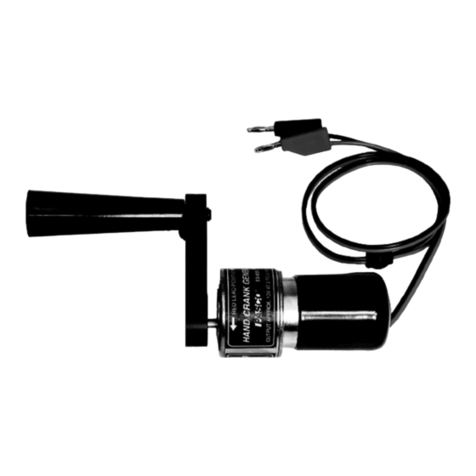
PASCO
PASCO EM-8090 instruction manual
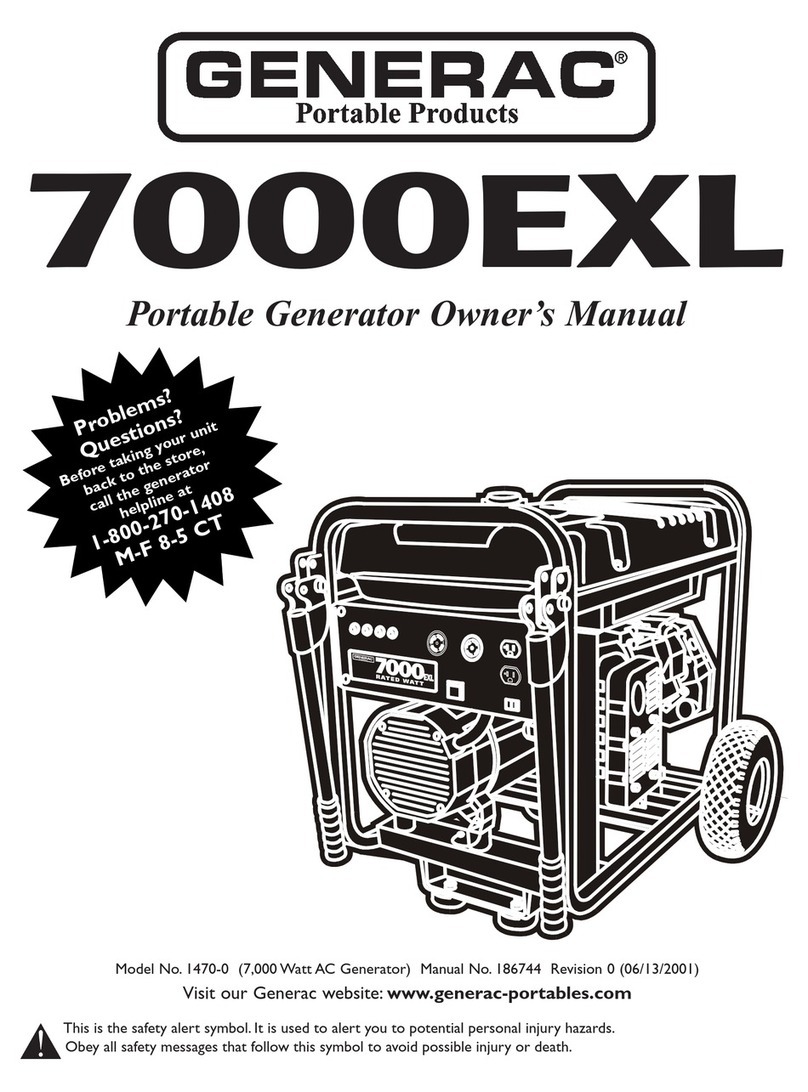
Generac Power Systems
Generac Power Systems 7000exl owner's manual
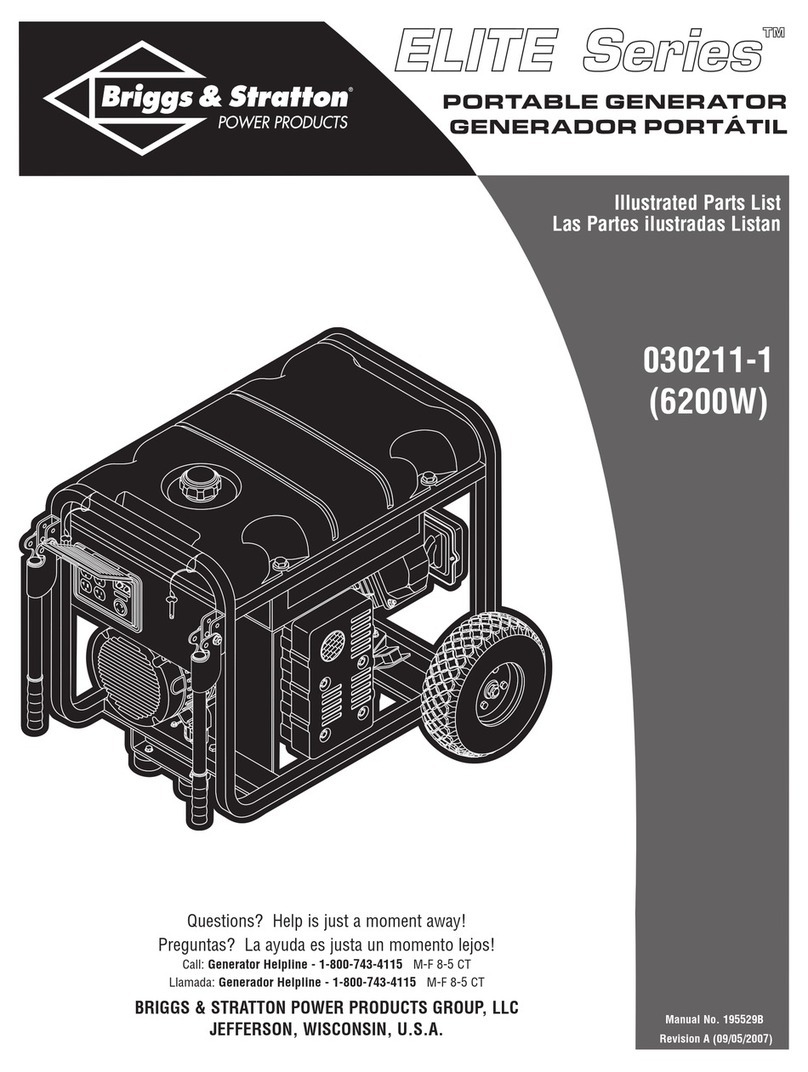
Briggs & Stratton
Briggs & Stratton 030211-1 Illustrated parts list

Extron electronics
Extron electronics AC + USB 200 installation guide
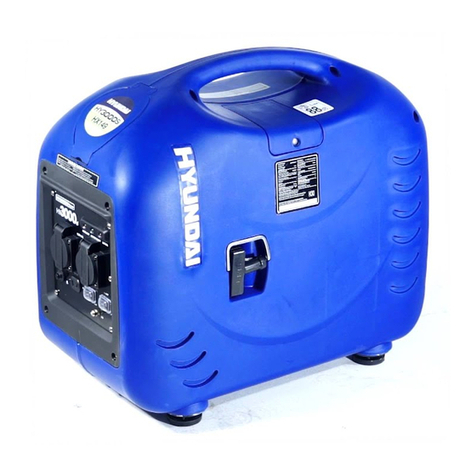
Hyundai
Hyundai HY3000SI user manual
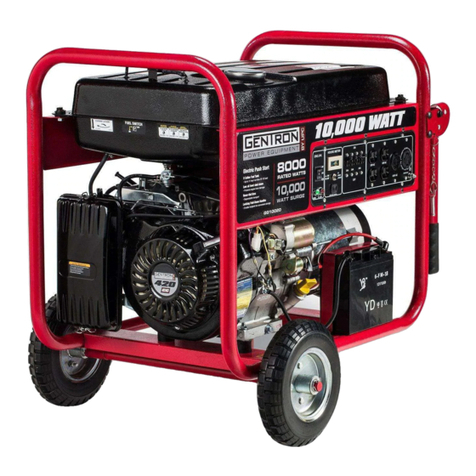
GENTRON
GENTRON GG10020 owner's manual
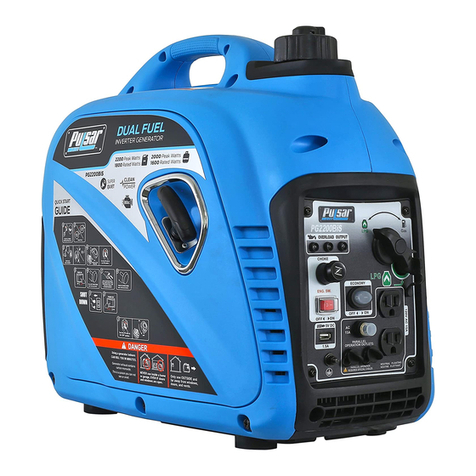
Pulsar
Pulsar PG2200BiS Operator's manual
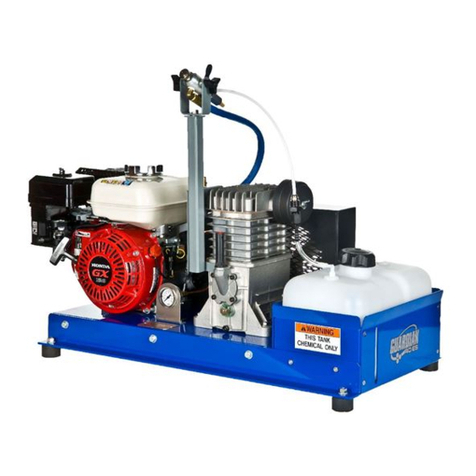
Guardian
Guardian 55 ES Operator's manual

WARRIOR
WARRIOR DIG1500 instruction manual
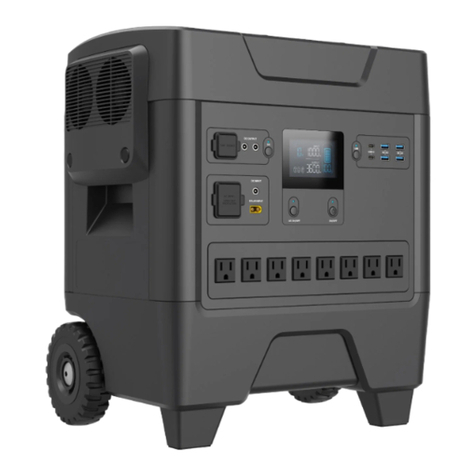
iFORWAY
iFORWAY HS3600 user manual
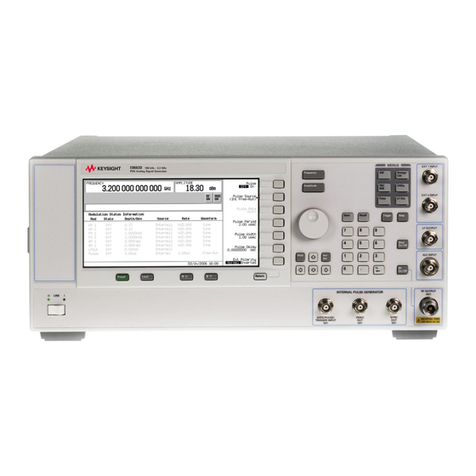
Agilent Technologies
Agilent Technologies E8663B user guide
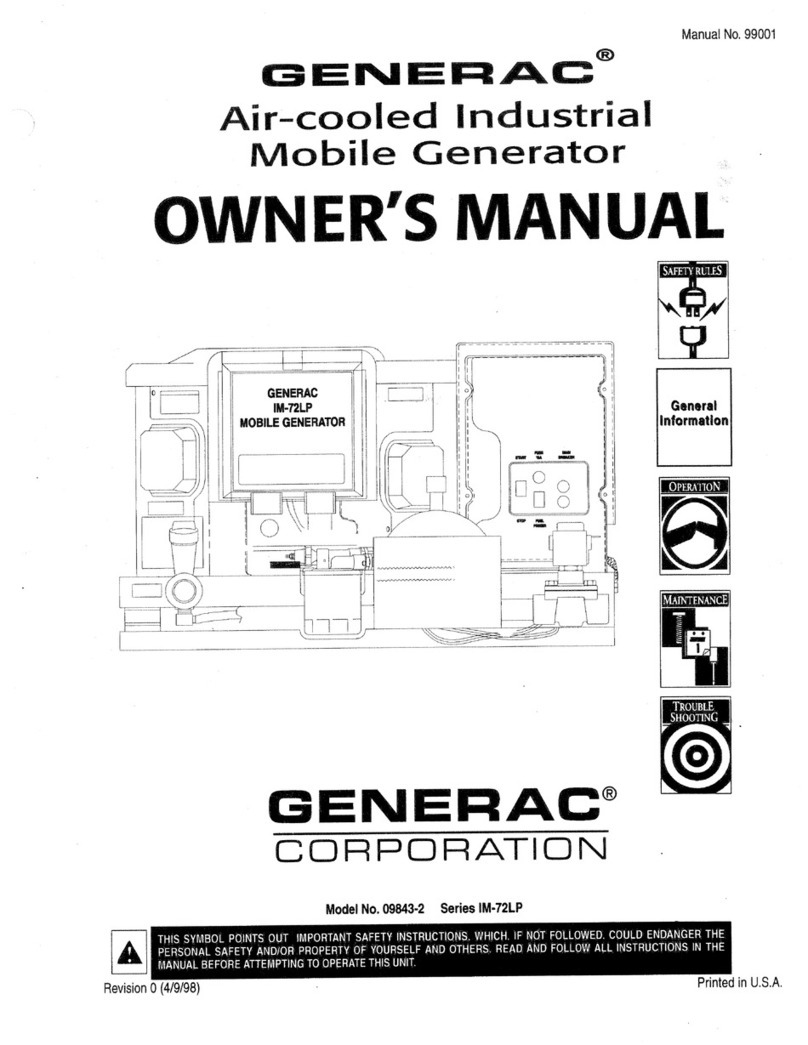
Generac Power Systems
Generac Power Systems Air-cooled Industrial Mobile Generator... owner's manual
